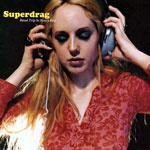 | 1. Superdrag – Head Trip In Every Key
Superdrag had one of the key rock radio hits in 1996 with "Sucked Out." In turn, when it came time for the second major label album, there was a lot of pressure for the Knoxville band to deliver another major hit. However, instead of delivering another "Sucked Out" or "Destination Ursa Major" – songs that had the lo-fi production of early Sebadoh and mixed such with early Beatles hooks and My Bloody Valentine guitar feedback – John Davis and crew went in a very different direction. "Hellbent" and "Do The Vampire," both released to radio as singles, are melodic and hooky yet full of venom. Head Trip In Every Key includes sitar, strings, horns, and multi-tracked vocal harmonies at various points. This is a headphone-friendly album that was recently re-released by SideOneDummy on vinyl.
|
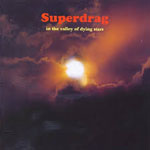 | 2. Superdrag – In The Valley Of Dying Stars After not turning out a hit with Head Trip In Every Key, Superdrag went back to work with dozens of new songs written. Elektra Records ultimately did not hear a hit single in those demos and Superdrag was dropped from their major label deal. Turns out that the band wrote a lot of great songs, and that some of those demos were usable – thus 2000's In The Valley Of Dying Stars. "Keep It Close To Me," the lead-off track, was truly original for its era. "Lighting The Way" was the first single, and it somehow made it onto the Dude, Where's My Car? soundtrack. Without this album, rumor has it that Dave Grohl would not have discussed the excellent production of Nick Raskulinecz, meaning there would have been no One By One by Foo Fighters.
|
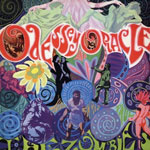 | 3. The Zombies – Odessey & Oracle It's been almost 50 years since the release of Odessey & Oracle and the album still sounds fresh. The rich harmonies and keyboard-strings make the recordings sound complex, although the melodies are catchy and can easily be hummed. The story behind Odessey & Oracle is sad, though. The album came out after The Zombies broke up; thus, the group's #1 hit from Odessey ("Time Of The Season") was also after-the-fact. Songs from Odessey have been covered by Paul Weller, Fountains Of Wayne, OK Go, The Avett Brothers, Foo Fighters, Elliott Smith, and Of Montreal. The Zombies – as led by vocalist Colin Blumstone and keyboardist Rod Argent – still regularly hit the road, so see them while you still can.
|
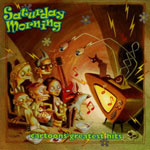 | 4. Various Artists – Saturday Morning: Cartoons' Greatest Hits The bad news first? This album appears to be out-of-print and it is currently unavailable on iTunes and Spotify. If you can find it – I have seen it on torrent sites – it is entertaining on two levels. First, these are covers of classic cartoon theme songs, most of which are from the 1970s. Second, a number of the artists had not yet made it (e.g. Semisonic, Sublime) and plenty of others were pretty surprising for a 1995 compilation (e.g. The Ramones, Helmet, Violent Femmes, Toadies, Sponge). You will want to listen to most of the compilation’s 19 tracks repeatedly.
|
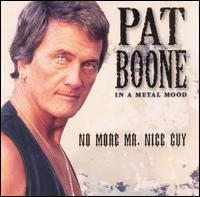 | 5. Pat Boone – In A Metal Mood
Pat Boone was infamous in the early days of rock ‘n’ roll for re-recording the "controversial" early hits of Little Richard and other "colored" artists for white artists. In the mid-1990s, Pat Boone was approached to cover hard rock hits, including favorites from AC/DC, Metallica, Judas Priest, Van Halen, and Dio. Far from "metal," these fully orchestrated arrangements sound like cocktail jazz. In turn, you have yourself a fun novelty album.
|
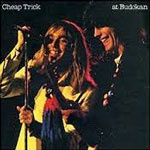
|
6. Cheap Trick – At Budokan
As rock mythology goes, Cheap Trick had no idea of how popular they were in Japan before touring there in the late 1970s. In turn, the then-struggling band was surprised to be playing multiple arena gigs on its first Japanese tour. At Budokan features the versions of "Surrender" and "I Want You To Want Me" that most people will recognize. The definitive versions of "Hello There" and "Goodnight" are also on there. The two-disc re-release from recent years includes a lot of songs that were not part of the original edition. Cheap Trick had plenty of great songs after At Budokan came out (e.g. "Dream Police," "I Can't Take It," "Stiff Competition"), but At Budokan showcases the Rockford quartet at its finest.
|
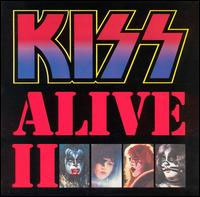
| 7. KISS – Alive II
Another live album of the 1970s, although rumor has it that much of Alive II was recorded post-tour in the studio; that goes beyond the five new studio tracks at the tail end of disc two. The first Alive includes the recording of "Rock And Roll All Nite" that classic rock radio still plays, yes, but Alive II has "Detroit Rock City," "Love Gun," "Christine Sixteen," "Hard Luck Woman," "Calling Dr. Love," "Beth," "I Stole Your Love," "Shout It Out Loud"...well, lots of the KISS essentials. The song is also the subject of a great track from the Candy Butchers' full-length Hang On Mike.
|
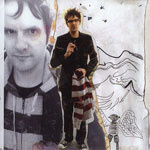 | 8. Mike Viola – Lurch Speaking of Mike Viola and the Candy Butchers, Lurch is a mix of studio recordings made five years after Mike left the Sony ranks. Leadoff track "Maybe, Maybe Not" is great lo-fi power-pop. "So Much Better," as heard in the credits of the Cameron Diaz movie Sex Tape, is one of the best wedding songs a person could ask for. In the years since Lurch came out, Mike has become an in-demand songwriter, producer, and musician for other artists. Collaborators have included Ryan Adams, Jenny Lewis, The Monkees, Weezer, Panic! At The Disco, Matt Nathanson, and Rachael Yamagata.
|
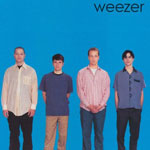 | 9. Weezer – Weezer (The Blue Album) And speaking of Weezer, that first album? It's so much more than "Undone (The Sweater Song)," "Buddy Holly," and "Say It Ain't So." Its 10 songs are essentially an alternative 1990s time capsule. The Blue Album is also arguably the most important project that Ric Ocasek worked on outside of The Cars. More than 20 years later and Weezer fans are still begging for Weezer to replicate the creativity on Blue. Which they undoubtedly tried to do on Everything Will Be Alright In The End.
|
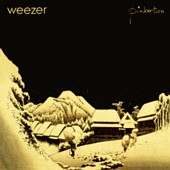 | 10. Weezer – Pinkerton
Weezer followed up Blue with Pinkerton, a self-produced, noisy, confessional album. Not what the label had wanted, nor what fans of Weezer's early hits had craved. Rolling Stone voted it as one of the worst albums of the year, which it has since retracted. For me, Pinkerton was an immediate masterpiece. "El Scorcho" and "The Good Life," the first two singles, were smart and had great sing-along choruses. Weezer frontman Rivers Cuomo disowned Pinkerton for at least a decade, but the album remains a cult favorite.
|
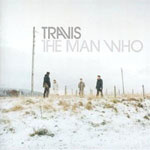 | 11. Travis – The Man Who Travis didn't chart in the U.S. like they did in the U.K. with their rock-centric debut album. However, the band's second effort, The Man Who, made waves everywhere. Producer Nigel Godrich, still riding high from his work with Radiohead, helped Fran Healy and crew find the stripped-down sound that best suited gems like "Why Does It Always Rain On Me?" and "Turn." The Man Who features music that manages to be mellow, melodic, and emotional all at the same time. The follow-up, The Invisible Band, is another gem from Travis, yet The Man Who created that Travis template.
|
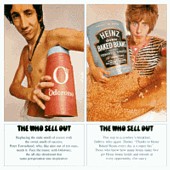
| 12. The Who – The Who Sell Out
The Who Sell Out is an innovative album on several levels. The album's production is very advanced for 1967. It is a conceptual album, preceding the Tommy rock opera. The songs and the album's artwork also tackle the idea of a band "selling out" long before it was commonplace to do so. In turn, a number of the songs are funny. Keith Moon is in top form behind the drum kit. On top of that, "I Can See For Miles" is supposedly the song that inspired Paul McCartney to write "Helter Skelter," which is often cited as the inspiration for the heavy metal genre.
|
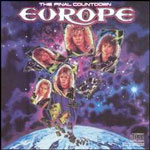 | 13. Europe – The Final Countdown
Europe's 1986 album The Final Countdown, which sold multi-platinum in the U.S., is most famous for its title track. But four other singles were released from the album: "Love Chaser," "Rock The Night," "Cherokee," and the power ballad "Carrie." And most of those songs were featured in the Andy Samberg movie Hot Rod. The Final Countdown is among the finest in 1980s pop-metal, way before the genre became so hair and image-centric.
|
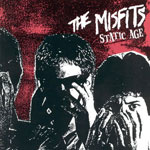 | 14. The Misfits – Static Age While The Misfits was not a popular band while Glenn Danzig was its helm, its songs were covered by the likes of Guns N' Roses, Metallica, Alkaline Trio, The Bouncing Souls, Dropkick Murphys, Green Day, Jawbreaker, Hatebreed, NOFX, My Chemical Romance, Sum 41, Refused, Superchunk...well, lots of artists. As the story goes, Static Age was recorded in 1978 but did not get a proper release until 1997. And some of those covers were recorded before Static Age was released. The Misfits played horror-influenced punk before that concept even existed. "Attitude," "Bullet," and "Last Caress" still sound great all these years later.
|
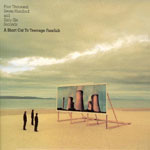
|
15. Teenage Fanclub – Four Thousand, Seven Hundred And Seventy Seconds The Teenage Fanclub album Bandwagonesque was notoriously the #2 album on the year of its release according to SPIN Magazine; Nevermind by Nirvana was #1. A few years later, Liam Gallagher proclaimed Teenage Fanclub as the #2 band in the world; Oasis was who he thought was #1. Teenage Fanclub always had friends in high places, but didn't always have the marketing muscles. Like Sloan, Teenage Fanclub has multiple songwriters and lead vocalists in the fold, so not all fans of the band are going to have the same favorites from the catalog. In turn, for those unfamiliar, I would recommend the compilation known as Four Thousand, Seven Hundred And Seventy Seconds as a starting point. The group's 2016 release, Here, was also impressive.
|
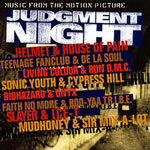
|
16. Music From The Motion Picture – Judgment Night
Teenage Fanclub was one of the bands featured on the Judgment Night soundtrack. Undoubtedly, the soundtrack of this film – which has sold more than a half-million copies – is more famous than the film itself. The concept of the soundtrack album is the pairing of a hard rock band with a hip-hop artist on each track. As such, Teenage Fanclub collaborated with De La Soul. Helmet and House Of Pain worked together. Dinosaur Jr. and Del the Funky Homosapien were another pairing. Faith No More and the Boo-Yaa T.R.I.B.E. made for a surprisingly strong team as well. Rumor has it that Tool and Rage Against The Machine recorded a demo for the soundtrack but it did not make the final cut. Either way, without this soundtrack, the Loud Rocks compilation would not have happened. Then again, neither would the nu-metal genre. Pros and cons...
|
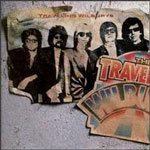
| 17. Traveling Wilburys – Vol. 1
The Traveling Wilburys was a supergroup formed by George Harrison, Roy Orbison, Bob Dylan, Jeff Lynne, and Tom Petty. The quintet's 1988 debut album managed to combine folk, country, and rockabilly into a radio-friendly sound. "Handle With Care" – as later covered by Jenny Lewis, Bright Eyes' Conor Oberst and Death Cab For Cutie's Ben Gibbard – and "End Of The Line" were its hits. But Roy Orbison passed away before the release of Vol. 1 and no touring was done in support of this gem. Fortunately, this was not the end of the Wilburys.
|
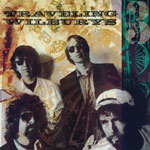 | 18. Traveling Wilburys – Vol. 3 Vol. 3 was the follow-up to Vol. 1, another sign of the Wilburys' humor. Down to a quartet, the Wilburys turned the volume (and rock influence) up on Vol. 3, with Bob Dylan and Tom Petty taking on more lead vocals than Jeff Lynne or George Harrison. Any way you slice it, the Traveling Wilburys was a collective of superstars, and I can't think of a better rock supergroup over the past 30 years. The 2007 reissue of Vol. 3 includes two bonus tracks, covers of Del Shannon and Hank Snow.
|
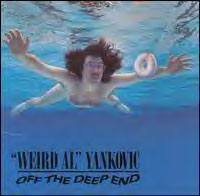
|
19. "Weird Al" Yankovic – Off The Deep End
As noted within the Behind The Music episode of "Weird Al" Yankovic, the master of the song parody has had a much longer career than most of the people he has parodied. The focal point of Off The Deep End – considered a comeback album after the UHF soundtrack had stiffed along with the movie – was Al's parody of Nirvana's "Smells Like Teen Spirit." While parodies of Gerardo, Milli Vanilli, and New Kids On The Block may not hold up so well in 2016 (or 2017), Off The Deep End features everything a Weird Al album ought to; there are also the stylistic parodies, in addition to the polka mix. "You Don't Love Me Anymore" is one of the more underrated songs in the Weird Al catalog, an implied take-off on Extreme's "More Than Words." Wherever your appreciation of Weird Al started, nearly four decades since "My Bologna" and "Another One Rides The Bus," he is still doing great work.
|
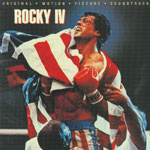
| 20. Original Motion Picture Soundtrack – Rocky IV Soundtrack Unless you love stereotypes and illogical writing, Rocky IV is not one of the three greatest Rocky movies. But most of its soundtrack – released by Scotti Bros. Records, the label that made Weird Al a big star – holds up. "No Easy Way Out" by Robert Tepper, "Hearts On Fire" by John Cafferty, "Eye Of The Tiger" and "Burning Heart" by Survivor...Cheesy as they may be, they ought to pump you up if you need to keep doing whatever you need to be doing.
|
 Darren Paltrowitz has authored two ongoing columns for the Daily Vault over the years. Both the original model (Moving In Stereo) and the more recent Keeping Up (With Darren Paltrowitz), which ran 50 episodes from 2008 through 2011, featured an eclectic mix of news and observations about musical and pop culture doings. For the site's 20th anniversary, Darren returned with a characteristically wide-ranging and quirky set of albums that influenced him.]
Darren Paltrowitz has authored two ongoing columns for the Daily Vault over the years. Both the original model (Moving In Stereo) and the more recent Keeping Up (With Darren Paltrowitz), which ran 50 episodes from 2008 through 2011, featured an eclectic mix of news and observations about musical and pop culture doings. For the site's 20th anniversary, Darren returned with a characteristically wide-ranging and quirky set of albums that influenced him.] 


















